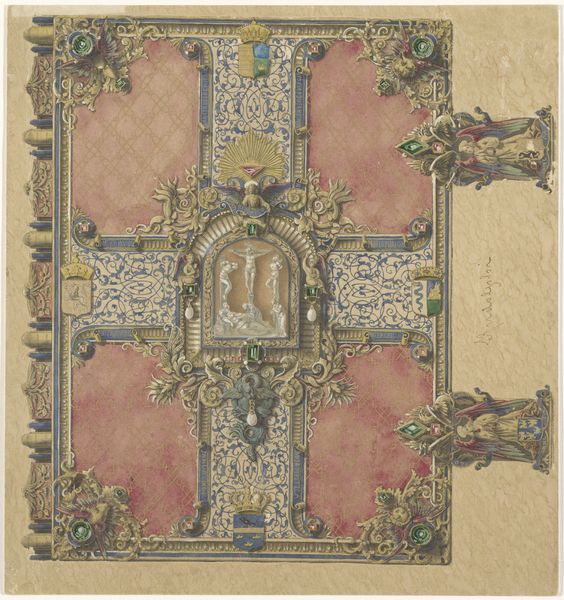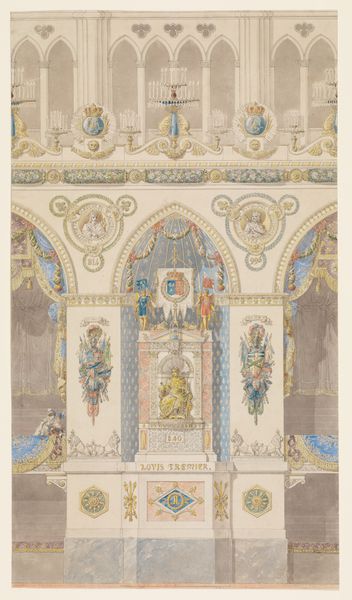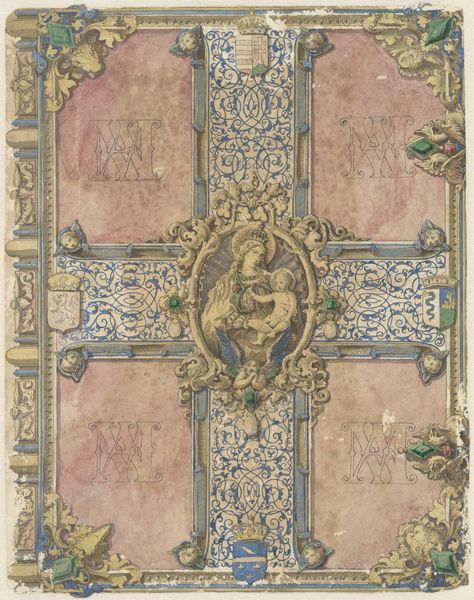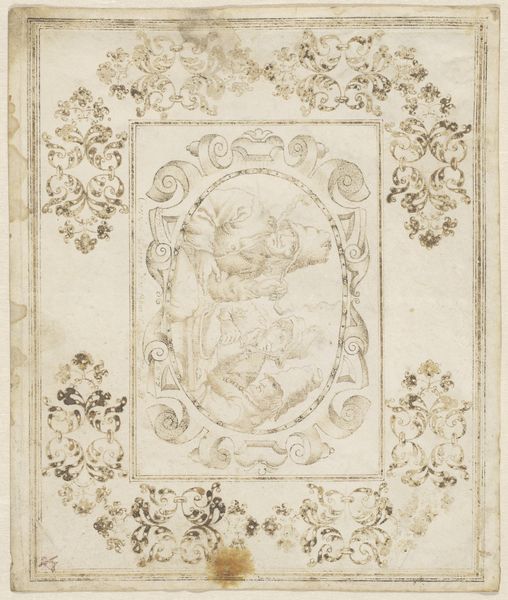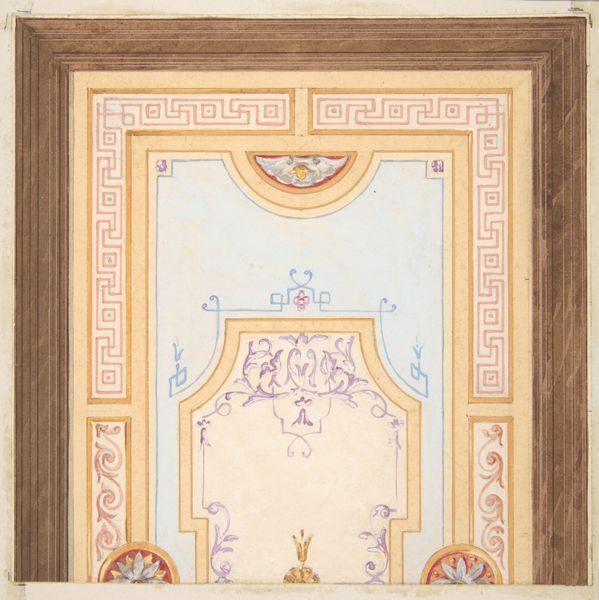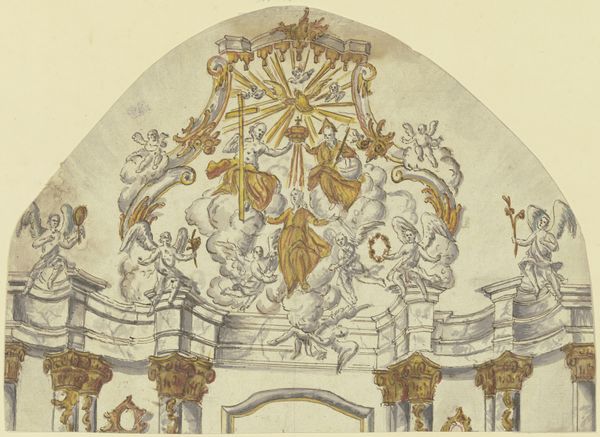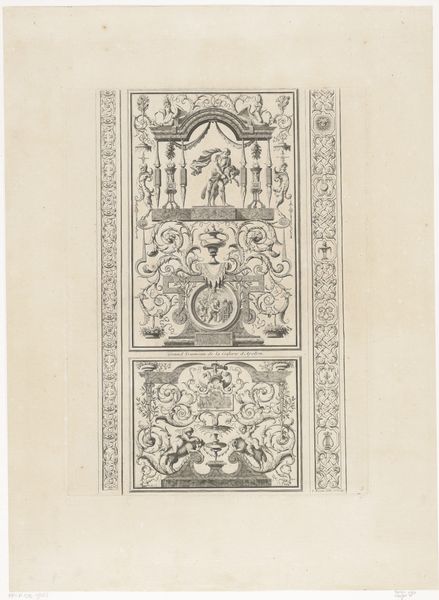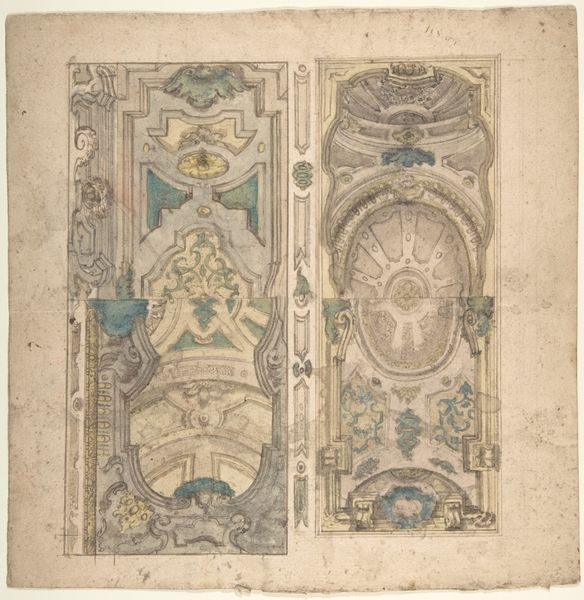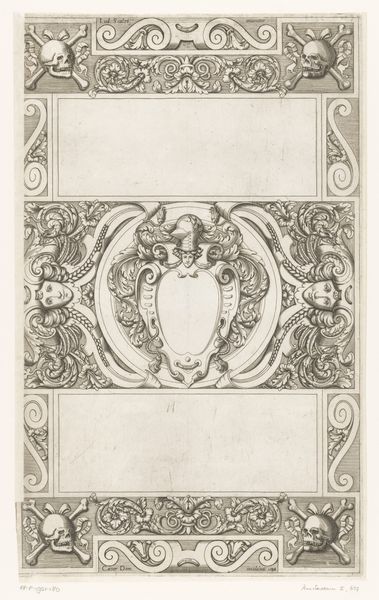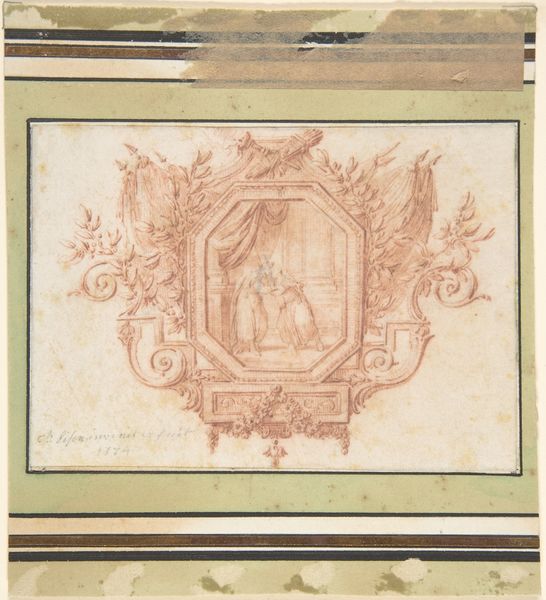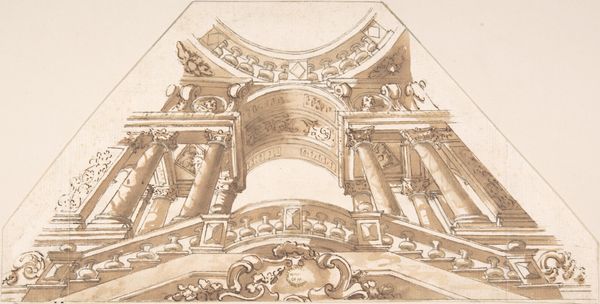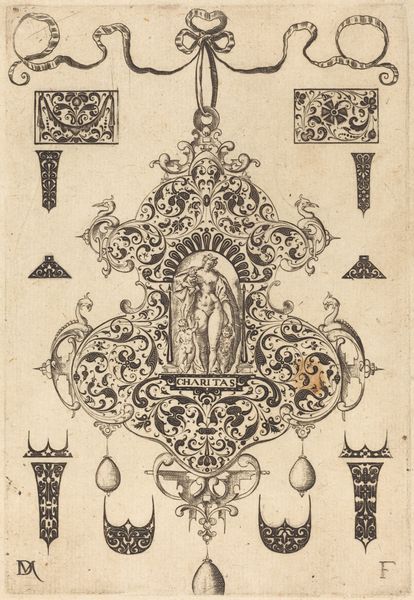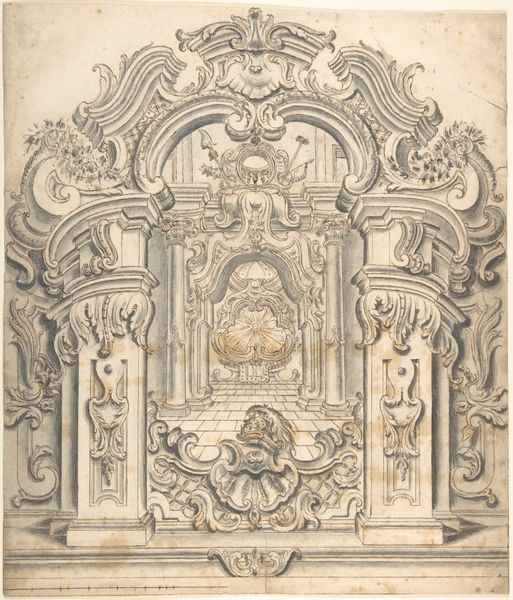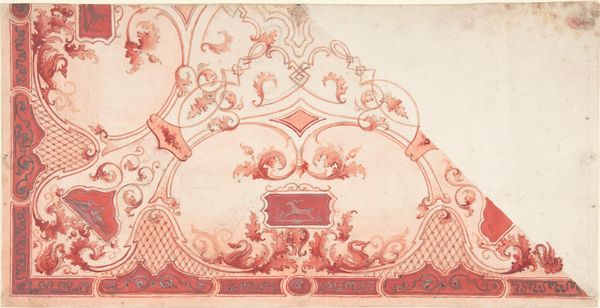
drawing, watercolor
#
drawing
#
figuration
#
11_renaissance
#
watercolor
#
intimism
#
watercolour illustration
#
miniature
#
watercolor
Dimensions: height 285 mm, width 275 mm, height 300 mm, width 280 mm
Copyright: Rijks Museum: Open Domain
Editor: So, this is Frédéric-Jules Rudolphi’s "Design for a Jewel-Encrusted Book Binding," dating from around 1845 to 1860, done in drawing and watercolor. I’m struck by how intricate the design is, almost like a tapestry. What jumps out at you? Curator: I am immediately drawn to the formal interplay of textures and the subtle colour palette. Consider the flat, patterned background against the illusionistic depth of the architectural elements and the figures. Rudolphi uses watercolor in such a way that the medium's transparency contributes to the luminosity and jewel-like quality he’s trying to convey, no? The symmetrical arrangement gives us balance, but it also a static feeling, don't you think? Editor: I see what you mean about the static quality. It's balanced, yes, but also very formal and restrained. I wonder, what does the symmetry achieve formally? Curator: Symmetry often signifies order and control, key formal qualities that we can observe in the artistic practices from the Renaissance and onward. Symmetry creates a visual hierarchy and focal point in this design, which draw the eye to the central image of the Madonna and Child. This centrality underscores the primary function of the book, most likely a devotional object, wouldn't you agree? Editor: Yes, I hadn't considered how the composition itself reinforces the book’s purpose. Looking closer, I'm starting to see how the details – like the gems and sculptural figures – contribute to a sense of richness and importance. Curator: Precisely! Rudolphi orchestrates these elements to craft a highly ornamental, essentially symbolic object. Notice also the function of each miniature scene as a frame itself: from what symbolic realm could it come? And how that might connect with other bookbindings? Editor: It’s fascinating to consider the formal choices and their potential to influence meaning and visual purpose! I’m beginning to look at all these features in such a way as they connect to this miniature’s structural organisation and historical importance.
Comments
No comments
Be the first to comment and join the conversation on the ultimate creative platform.
